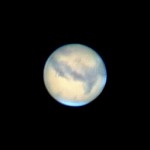In reading my friend Dean Ketelsen’s blog he reminded me that I have not yet assembled my usual year in review blog entry. Darker View is a blog, a web log of my life as blogs were originally invented.
As it is customary to use the new year’s holiday as a reason look back on the previous year I shall do just that. A chance to recall what adventures life has brought us, to remember the little victories, and hopefully not too many failures.
There were 434 blog entries for 2014 detailing a busy year. At least a few folks actually come by to read all of those posts, DarkerView had 69,694 view from 31,607 unique visitors. Looking through the top read posts of 2013 reveals some interesting points…
- Astrophotography with the EOS-M
- The iOptron ZEQ25
- Repairing a Wii Balance Board
- A Backyard Telescope Pier
- Autoguiding the iOptron ZEQ25 with an SBIG STi
- Starscape Photography
- Degrees, Arc-Minutes and Arc-Seconds
- SBIG ST-i Autoguider
- Mauna Kea Claims Another…
- Deep Violet, an 18″ f/4.5 Dobsonian
- Total Lunar Eclipse 14 April 2014
- Rebuilding a 12.5″ f/5 Truss Tube Dobsonian
- USB to ST-4 Autoguiding Adapter
- Canon EOS-M
- Rewiring a Celestron NexStar Telescope
- The Hotech CT Laser Collimator
- A Red LED Desk Lamp
- Shoveling Snow in a Tropical Paradise
- Visiting the Summit of Mauna Kea
- Elongations, Conjunctions and Oppositions
- A Second Try for the EOS-M
- Getting Focus Right
It is a surprise just how many of these articles were written before 2014, at least two of these articles are from the old Whitethorn House website, well over a decade old! The telescope making posts make up most of these older, well read articles. It is clear that folks are using DarkerView for reference, finding these old articles in the search engines. Hopefully they are still useful.
Removing the pre-2014 posts from the list dramatically shortens it…
- Starscape Photography
- Total Lunar Eclipse 14 April 2014
- The Hotech CT Laser Collimator
- Shoveling Snow in a Tropical Paradise
- Visiting the Summit of Mauna Kea
- Getting Focus Right
I am not sure that this is good. Is my writing falling off? Or does my older work just have staying power that it continues to serve a use for readers. This will be interesting to watch as I start another year of blogging. DarkerView is here to stay.



